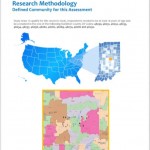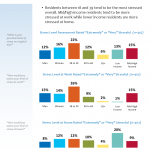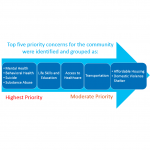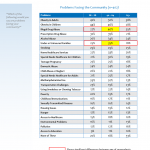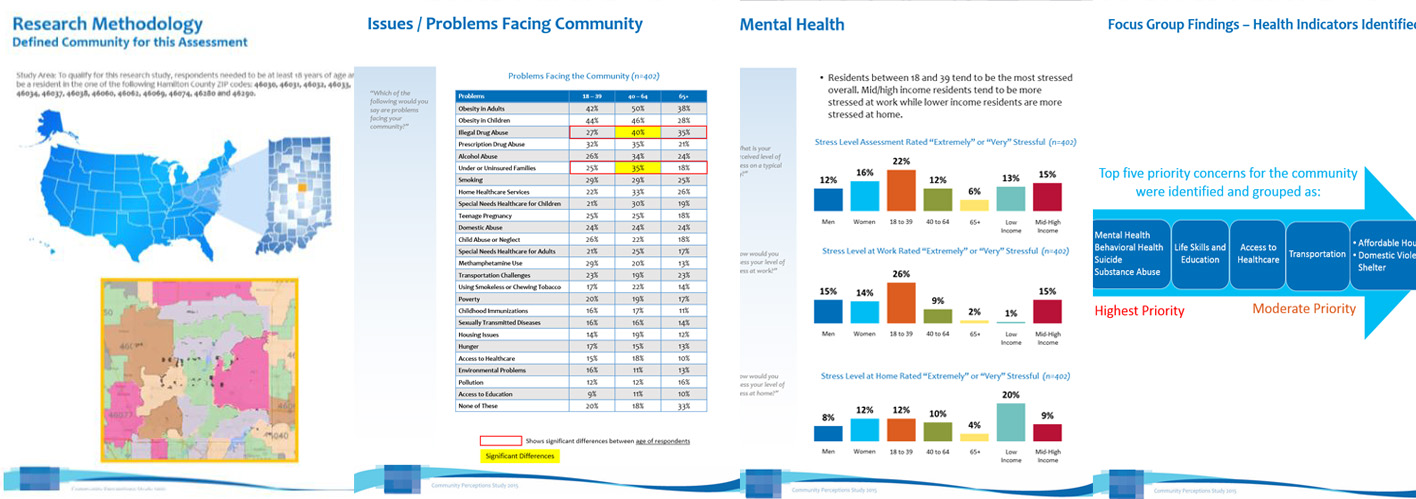
POSTED BY: RJ Gerard | March 10, 2016
Changes in legislation require not-for-profit hospitals to publicly demonstrate community benefit by conducting a community health needs assessment (CHNA) every 3 years. Is your research plan in place?
CHNA: A National Requirement
With the full-scale implementation of the Patient Protection and Affordable Care Act and over 70,000 ICD codes enacted in the US as of October 1, 2015, hospital leaders are seeing more demands on their compliance requirements. Not-for-profit hospitals, in order to maintain their tax-exempt status with the IRS, have long been required to provide benefit to their community. 2012 changes in legislation now require that such hospitals publicly demonstrate community benefit by conducting a community health needs assessment (CHNA) every three years and prove the adoption of an implementation strategy to meet the identified community health needs (Schedule H Form 990) regarding progress toward addressing identified needs.
It may be daunting, but a CHNA can be a straightforward research study when handled properly. It identifies key health needs and issues through systematic, comprehensive data collection and analysis, managing a representative sample and ensuring statistical validity. The systematic process involves the community to identify and analyze community health needs and assets in order to prioritize these needs, and to plan and act upon unmet needs. This can involve partnerships with other clinical, public health, and population health focused organizations.
The IRS has provided initial guidance concerning the CHNA requirement (see legislative and tax information); this guidance has been further amplified by individual states to accommodate their state-specific requirements for tax-exempt status. A growing set of tools, examples, and analyses are provided below to assist both those tasked with preparing a CHNA, as well as those interested in reviewing national progress (U.S. National Library of Health).
Benefits for Hospitals
- Assures compliance with ACA and IRS guidelines
- Enables planning and benchmarks for public health practice improvements and population health
- Improved organizational and community coordination and collaboration
- Increased knowledge about public health and the interconnectedness
- Baselines on performance to use in preparing for accreditation
Anatomy of CHNA
Keeping with CDC recommendation, community health assessments should hinge on the principles of multi-sector collaboration, diverse population engagement, measurable results, transparency, and evidence-based interventions.
According to IRS Notice 2011-52, the required components of a CHNA include:
- A description of the community served
- A description of the process and methods used to conduct the assessment
- A description of methods used to include input from people representing the broad interests of the community served
- A prioritized description of all community health needs identified in the CHNA, as well as a description of the process and criteria used in prioritizing such needs
- A description of existing health care facilities and other resources in the community available to meet the needs identified in the CHNA.
SMARI + CHNA
At SMARI, we conduct a community health needs assessment with the same rigor as all our major regional and national studies. There is a standard set of analyses to fulfill national requirements of a CHNA, but also a deeper, customized look into the unique issues a hospital feels need particular focus. Recently, mental health and population health have drawn more attention than in previous years. Over many projects, we’ve realized what makes a truly successful community health needs assessment. What to expect from our CHNA:
- High quality primary data
- Per the CDC’s recommendation, “highest quality data pooled from, and shared among, diverse public and private sources.”
- Adherence to ESOMAR ethical research guidelines
- HIPAA trained phone interviewing staff
- Qualitative expertise with stakeholder interviews
- A CHNA can also be bolstered by in-depth interviews or other qualitative research.
- Interviews with community health leaders helps understand and guide the focus of the needs research.
- Secondary research
- A comprehensive review and inclusion of existing metrics on the national, state, and county level provide context.
- Comprehensive AND comprehensible
- Organized and presented to be a living document among hospital administration
- Executive summaries help leadership with key takeaways
- Full reporting covers all areas of population health
- Regional and national healthcare experience
- Over 33 years working with many hospital systems on health needs evaluation
Is your CHNA more standard or custom? Let’s have a discussion. In the meantime, see these resources for further information:
Additional Resources:
Notice 2010-39: Request for Comments Regarding Additional Requirements for Tax-Exempt Hospitals – Internal Revenue Service
What Is a Community Health Assessment? – Center for Disease Control
Best Practices for CHNA – Kaiser Permanente
Commonly Used Planning Models, Frameworks & Tools – Center for Disease Control
PHAB Standards and Measures for – Public Health Accreditation Board, 2011
HSRIC: Community Benefit – The U.S. National Library of Medicine has also assembled a growing set of tools, examples, and analyses to assist both those tasked with preparing a CHNA, as well as those interested in reviewing national progress.
- Methodology and geography for CHNA
- Mental health examined.
- Analysis of actionable priorities.
- A prioritized breakdown of issues.

